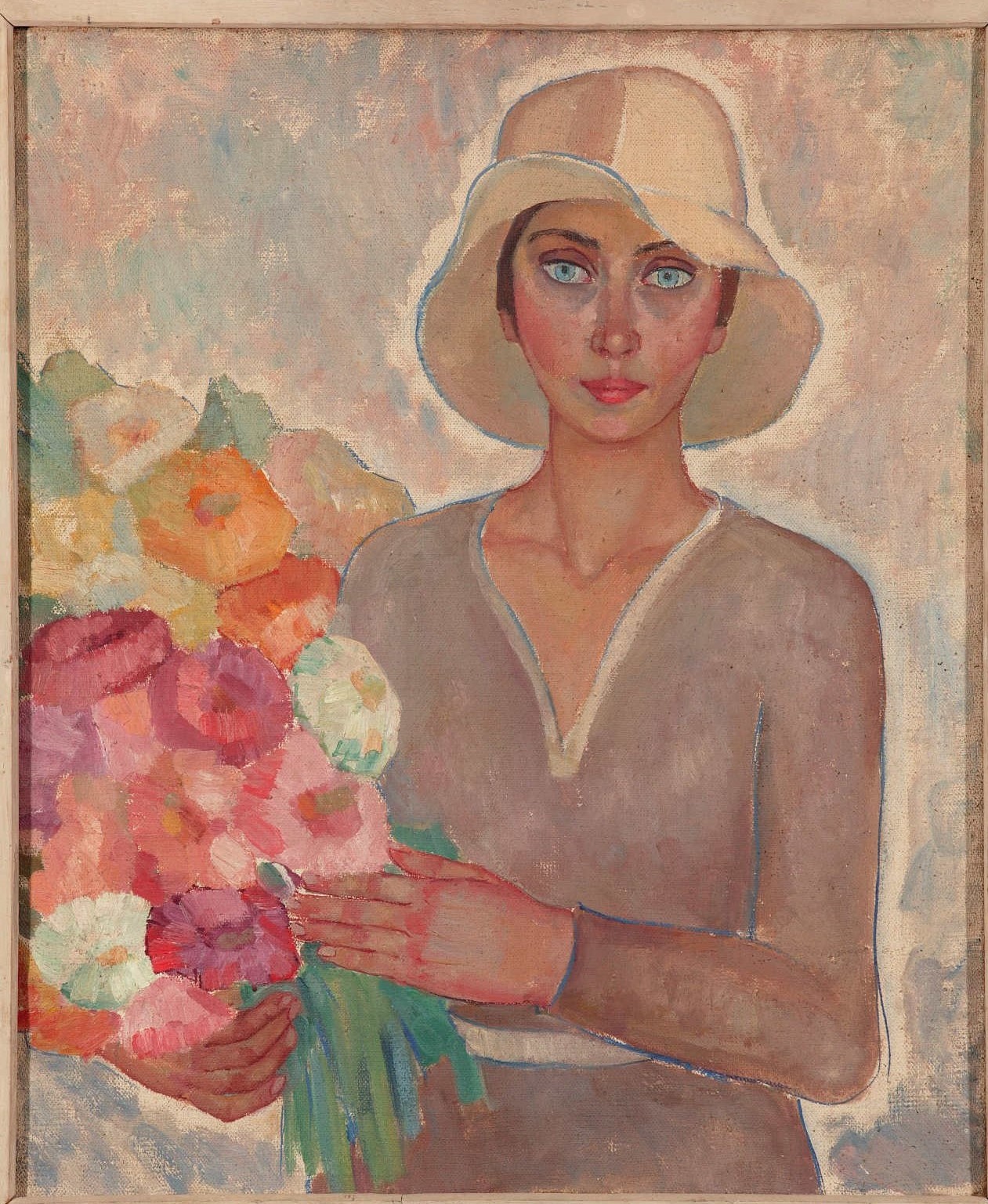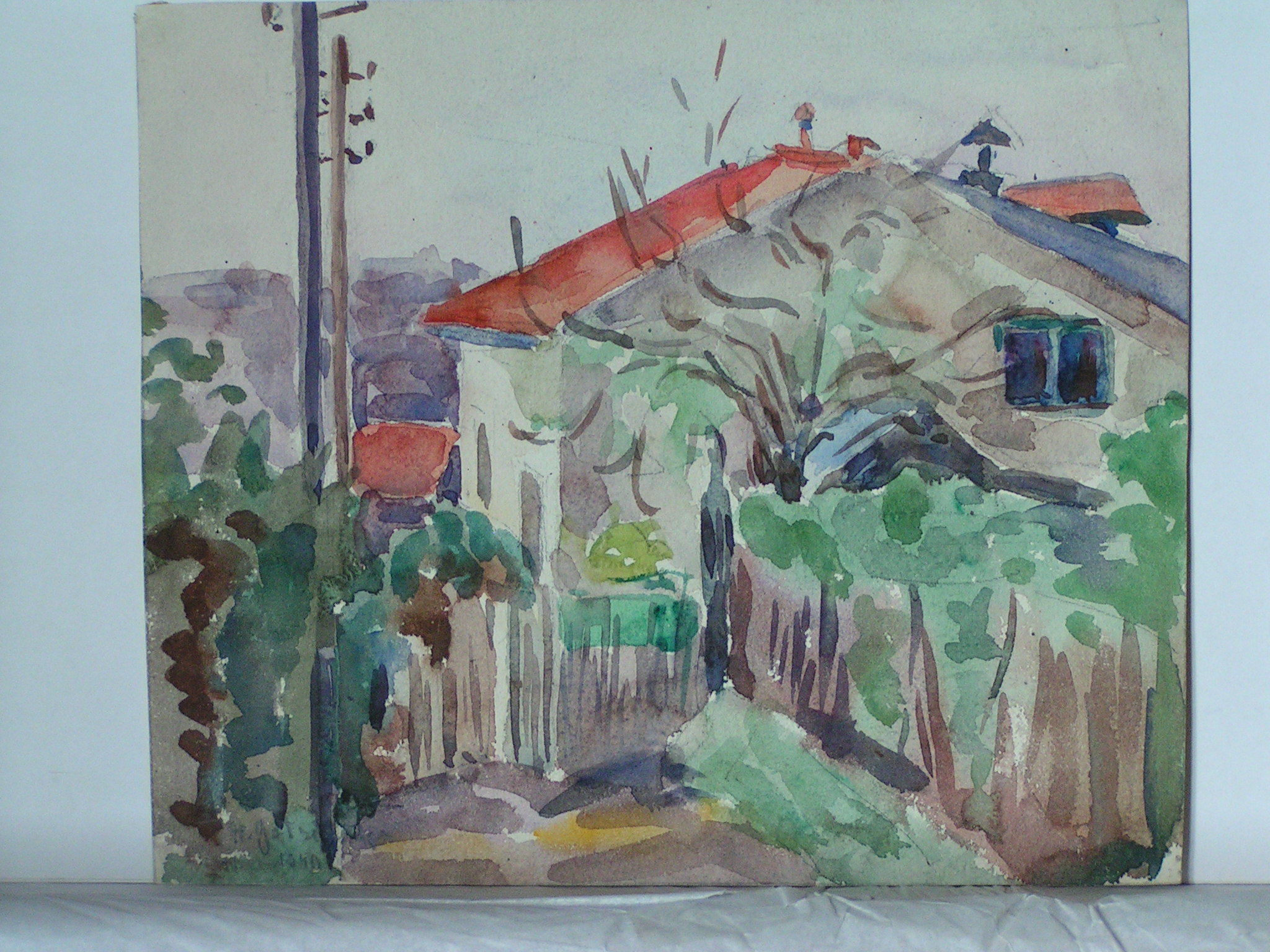Archive
Lydia Nikanorova
- Lydia
- Nikanorova
Lydia Nicanorova, Лидия Никанорова
- 23-03-1895
- Brest (BY)
- 02-08-1938
- Lencastre (FR)
- Painter
In Istanbul, Nikanorova worked at copying the mosaics and frescoes of the Kariye Mosque, and met her future husband, Georges Artemoff, also an émigré artist from the former Russian Empire.
Word Count: 30

Lydia Nikanorova and her husband Georges Artemoff in Clamart, France (Private Archive of Marie Artemoff-Testa). 
Lydia Nikanorova and her husband Georges Artemoff in Clamart, France (Private Archive of Marie Artemoff-Testa). 
Georges Artemoff painting Lydia Nikanorova’s portrait in Istanbul (Private Archive of Marie Artemoff-Testa). 
Émigré artists at Caveau Caucasien in Paris. From left to right: Sandro Minervine, Serge Pimenoff, Lydia Nikanorova, Georges Artemoff (Private Archive of Marie Artemoff-Testa). 
Self-portrait by Lydia Nikanorova (Private Archive of Marie Artemoff-Testa). 
Small house in Clamart, France, by Lydia Nikanorova (Private Archive of Marie Artemoff-Testa). Anonymous. “Vystavka Soyuza Russkih Hudojnikov.” Presse du Soir, 19 June 1922, n.p.
Artemoff-Testa, Marie. “Bonifacio ‘Les Belles Années’. Lydia Andreïevna Nikanorova: Une femme d’exception, un destin tragique.” (Unpublished text, sent to Ekaterina Aygün by Marie Artemoff-Testa, n.d.).
Kaverin, Veniamin. Pered Zerkalom. Sovetskiy pisatel’, 1972.
Kulakova, Asia V. “The Image of Byzantium in the Novel In Front of the Mirror by Veniamin Kaverin.” Slověne, vol. 6, no. 1, 2017, pp. 485–497.
Lesca, Pierre. “Georges Artemoff, un peintre et sculpteur russe à Toulouse.” L’AUTA, June 2011, pp. 233–236. Gallica, https://gallica.bnf.fr/ark:/12148/bpt6k1202194p/f35.item. Accessed 26 February 2021.
Ted’. “K Vystavke Hudojnikov.” Presse du Soir, 29 June 1923, n.p.
Word Count: 107
Private Archive of Marie Artemoff-Testa, France.
Slavonic Library (Slovanská knihovna) in Prague.
Word Count: 12
My deepest thanks go to Marie Artemoff-Testa for her valuable comments and help.
Word Count: 13
Istanbul, Ottoman Empire/Turkey (1920–1923); France (1924–1938).
Khedive's Palace/Hıdiv Kasrı, Çubuklu, Beykoz, Istanbul (place of work, as a translator, 1921); Kariye Mosque, Fatih, Istanbul ("place of work"); Küçük Yazıcı 4 (now presumably Tarlabaşı Blv. 79), Hüseyinağa, Beyoğlu, Istanbul (studio).
- Istanbul
- Ekaterina Aygün. "Lydia Nikanorova." METROMOD Archive, 2021, https://archive.metromod.net/viewer.p/69/2949/object/5138-11019537, last modified: 16-09-2021.
-
Georges ArtemoffPainterSculptorIstanbul
It is difficult to say to what extent Istanbul was a fateful impact on Artemoff in terms of his artwork, but there he met his future wife, artist Lydia Nikanorova.
Word Count: 30
Nikolai KlugePainterPhotographerArt restorerArchaeologistCopyistIstanbulAs a non-regular employee at the Russian Archaeological Institute of Constantinople before the Russian Revolution, Nikolai Kluge was perhaps the émigré artist most familiar with Istanbul.
Word Count: 26
Russkiy v Konstantinopole/Le Russe à ConstantinopleGuide-bookIstanbulThe guide-book was created for Russian-speaking refugees who had to leave their country and settle in Constantinople.
Word Count: 17
Exhibition of Russian émigré artists at Taksim Military BarracksExhibitionIstanbulThe exhibition of Russian-speaking émigré artists at Taksim Military Barracks was the first major exhibition organised by the Union of Russian Painters in Constantinople.
Word Count: 24
Union of Russian Painters in ConstantinopleAssociationIstanbulThe Union existed for less than two years but in that short space of time a tremendous amount of work was done by its members, refugees from the Russian Empire.
Word Count: 30